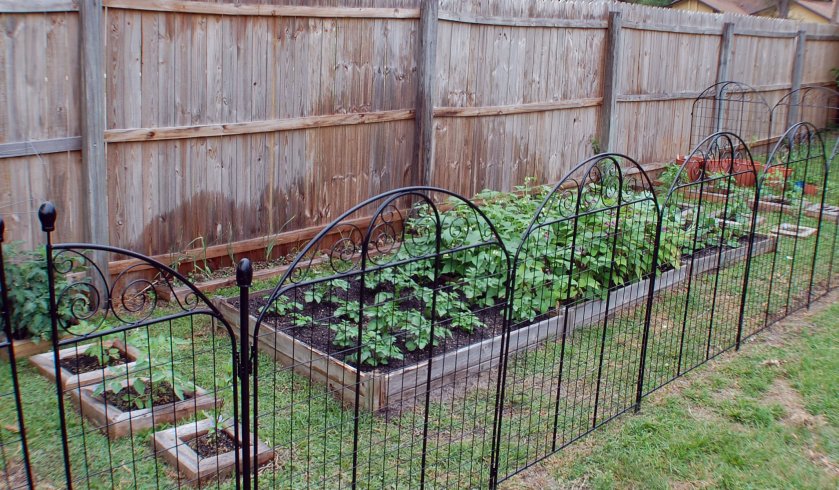There are two types of garden boundaries: those marking the perimeter of a garden, which usually provide security and privacy; and those within the garden, which generally demarcate different areas, screen storage areas, or just add character to your creation. Boundaries are also used to provide habitats for plants, giving them shelter, shade, or vertical spaces to climb up.
Most gardeners are happy to erect a few trellis or fence panels, but many regard extensive fencing or wall projects as jobs for the contractors. Before accepting larger challenges, compare the time and effort it will take with the money you will save by doing the job yourself.
Gravel boards
A gravel board is the horizontal strip of treated lumber at the base of the fence that prevents the fence panels from touching the soil and rotting. It is cheaper, more durable, easier to replace, and quicker to paint than a panel. The alternative to using gravel boards is to put the fence panels above ground level so that they don’t touch the soil; this will prevent them rotting, but it does leave a gap at the base of the fence.
Fixing prefabricated panels
There are several methods of fixing panels to posts. One method is to nail them using galvanized nails through the outer frame of the panel and into the posts. If you are not using gravel boards, prop the panel up on brieks and check the level before nailing. Alternatively, you can use L- and U-shaped brackets with predrilled fixing holes. These should be fixed in the center of the post and attached with 2-inch galvanized nails. Make a T-shaped gauge with two off-cuts: the vertical one aligns with the edge of the post and the horizontal one marks the center of the post.
Shortening a panel
If the fence does not finish with an exact panel width, it is easy to shorten a panel. Measure the distance between the penultimate and final post, scribe a vertical line down the panel, then carefully remove the upright batten at the end and reposition it on the inside edge of the scribed guideline. Hammer galvanized nails through the batten; putting a brick underneath turns the ends of the nail for added security. Then support the batten on a workbench or table and carefully saw off the protruding ends with a panel or jig-saw using a blade with fine teeth; work slowly and carefully to prevent the timber being split or damaged, cutting as close as possible to the outer edge of the newly repositioned batten. Paint the cut ends with wood preservative.



